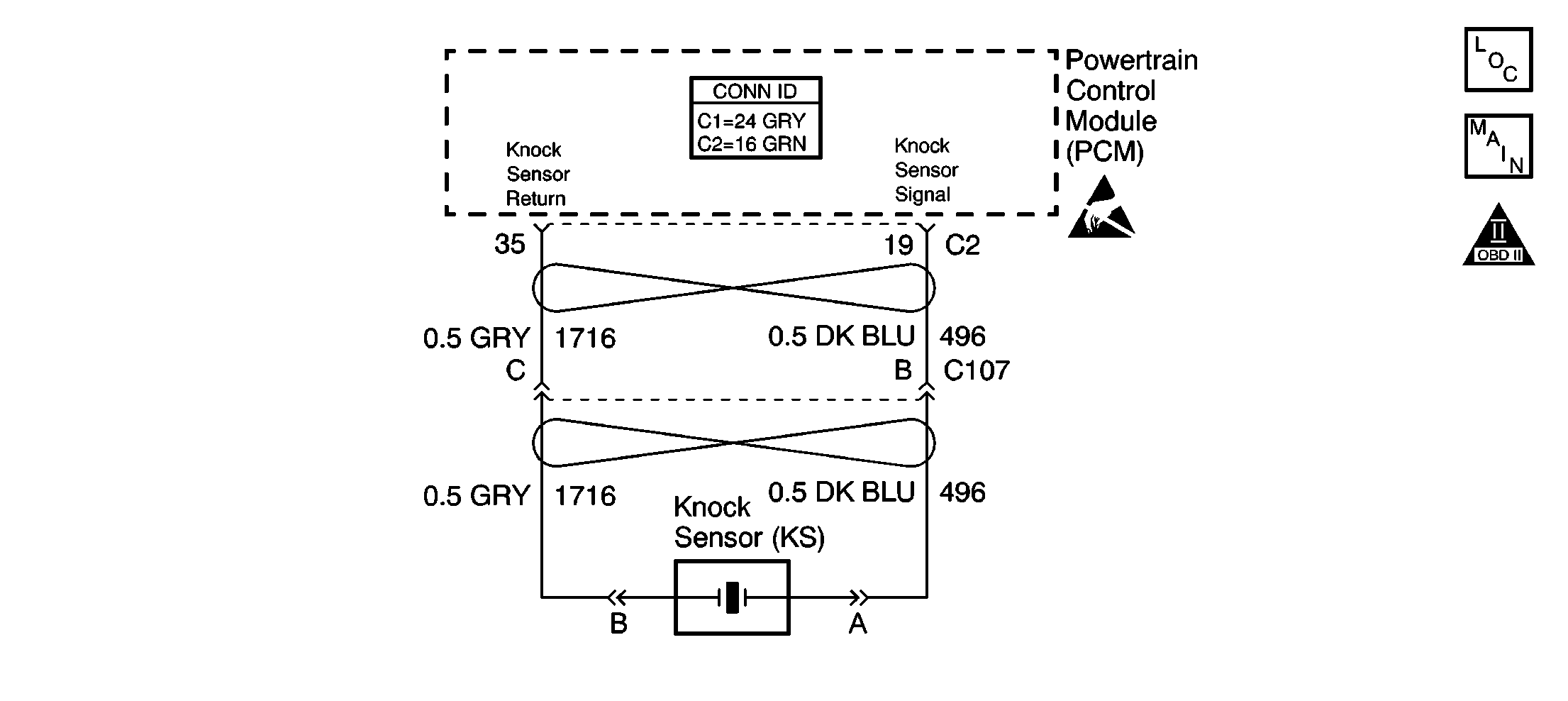
Circuit Description
The PCM uses a knock sensor (KS) to detect engine detonation (spark knock). The knock sensor produces an AC signal at all engine speeds, and loads. The PCM makes adjustments to the spark timing based on the amplitude and frequency of the KS signal.
A knock sensor module is no longer used to diagnose the knock sensor system. The circuitry is integrated into the PCM. The PCM uses the knock sensor to determine the amount of normal engine noise (noise channel) for a wide range of engine speeds and loads. The PCM compares the actual knock sensor signal to the learned noise channel. The PCM uses the noise channel to diagnose the knock sensor and related wiring. If the PCM detects a loss of the noise channel, DTC P0327 will set.
Conditions for Running the DTC
| • | Engine speed is more than 3000 RPM. |
| • | ECT is more than 40°C (104°F) |
| • | System voltage is between 11 and 18 volts. |
| • | Throttle angle is more than 5 percent |
Conditions for Setting the DTC
The PCM detects a KS signal less than 0.5 volt.
Action Taken When the DTC Sets
| • | The PCM will not illuminate the malfunction indicator lamp (MIL). |
| • | The PCM will store the conditions present when the DTC set as Fail Records data. |
Conditions for Clearing the MIL/DTC
| • | The history DTC will clear after 40 consecutive warm-up cycles have occurred without a malfunction. |
| • | The DTC can be cleared using the scan tool Clear DTC Information function. |
Diagnostic Aids
If the conditions is intermittent, refer to Intermittent Conditions .
Step | Action | Values | Yes | No | ||||||||
|---|---|---|---|---|---|---|---|---|---|---|---|---|
1 | Did you perform the Powertrain On Board Diagnostic (OBD) System Check? | -- | ||||||||||
2 |
Does the scan tool indicate that DTC P0327 failed last test? | -- | ||||||||||
3 |
Does the scan tool indicate that DTC P0327 failed last test? | -- | Go to Diagnostic Aids | |||||||||
4 |
Does the DMM display a fluctuating frequency while tapping on block? | -- | ||||||||||
5 |
Does the DMM display a fluctuating frequency while tapping on block? | -- | ||||||||||
6 |
Did you find and correct the condition? | -- | ||||||||||
7 | Locate and repair the following circuit conditions between the harness connector and the PCM.
Is the action complete? | -- | -- | |||||||||
8 |
Did you find and correct the condition? | -- | ||||||||||
9 | Replace the knock sensor. Refer to Knock Sensor Replacement . Is the action complete? | -- | -- | |||||||||
10 |
Important: The replacement PCM must be programmed. Replace the PCM. Refer to Powertrain Control Module Replacement/Programming . Is the action complete? | -- | -- | |||||||||
11 |
Does the scan tool indicate that DTC P0327 passed? | -- | System OK |
